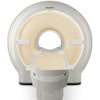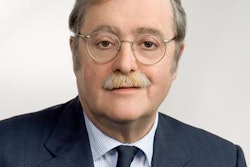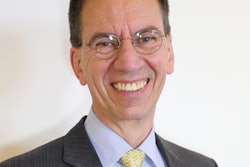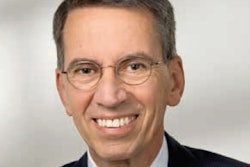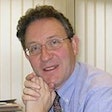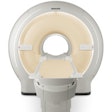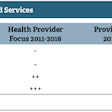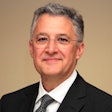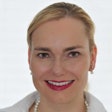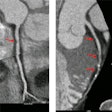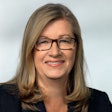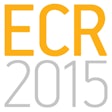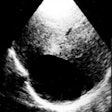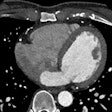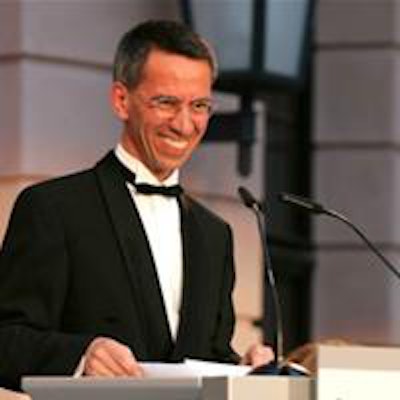
As the boss of one of Europe's largest radiology departments, Dr. Bernd Hamm is used to coping with immense pressure and a heavy workload. In this interview, he looks ahead to ECR 2015, which begins on 4 March, and speaks about his own department and clinical interests.
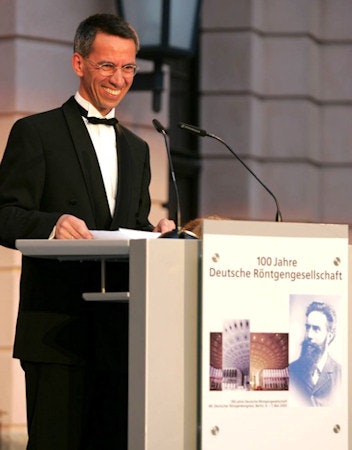 Hamm delivers a speech as president of the German Radiological Society (DRG) on the occasion of the 100th anniversary of the society.
Hamm delivers a speech as president of the German Radiological Society (DRG) on the occasion of the 100th anniversary of the society.AuntMinnieEurope.com: Can you describe your department?
Hamm: The radiology department provides a service for patients at all three sites of the Charité - Universitätsmedizin Berlin (see separate box below). The staff includes a total of about 120 physicians and scientists -- including physicists, chemists, veterinary physicians, biologists, and others -- and some 200 members, like technicians and nurses. Our facilities provide the full range of diagnostic imaging, as well as interventional procedures and treatments. The department has 11 CT scanners and 12 MR imagers. Each year we perform around 70,000 ultrasound examinations, 73,000 CT scans, 27,500 MRI examinations, and 9,200 interventional procedures.
A central interdisciplinary ultrasound laboratory, headed by the department of radiology, has been established at two of the three sites of the Charité. Interventional radiology, including minimally invasive tumor therapy, is another expanding focus of our department. Minimally invasive treatments performed by interventional radiologists of our department include percutaneous brachytherapy of liver cancer and liver metastases, selective internal radiation therapy (SIRT), and irreversible electroporation (IRE).
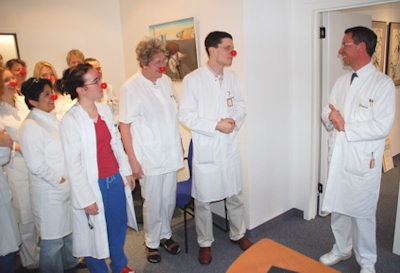 Red-nose radiology: Staff at the department enjoy a lighter moment with Hamm.
Red-nose radiology: Staff at the department enjoy a lighter moment with Hamm.How have you developed and built up your department, and what new equipment will come on stream this year?
The merger of the Charité with the other two university hospitals in Berlin after German reunification was a process that took some years. As a result, we now have a very large and complex department, which is quite demanding to manage. At the same time, such a large department has a huge advantage: There is at least one expert for each aspect of radiology.
Workflow is facilitated by the use of a uniform RIS and PACS; hence, there is smooth communication between the three major sites of the department. In addition, physicians of the Charité provide radiological services in some smaller hospitals all over Berlin. Besides physicians and scientists specializing in different areas of diagnostic imaging, we have a focus on advancing and expanding minimally invasive imaging-based interventions. We have a dedicated ward for the hospitalization of patients undergoing minimally invasive procedures or therapies. See our home page for more details.
For the future, we intend to cooperate even closer with the department of nuclear medicine in order to even better exploit the synergistic effects of hybrid imaging and to further develop and advance the new field of molecular imaging.
In your own clinical area of special interest -- MRI of the prostate -- what are the main changes you have witnessed?
Prostate MRI is an area where tremendous developments and advances have taken place recently. Both the clinical use of prostate MRI and its scientific investigation require close cooperation with the department of urology of the Charité and with many practice-based urologists.
I started my scientific career with a medical thesis in urologic imaging, though the topic was quite different, and I have an ongoing scientific interest in this subspecialty, slightly expanding my research focus to urogenital imaging and imaging of the female pelvis. Other scientific interests include the detection and characterization of liver tumors, the development of drug-eluting balloon catheters, and experimental aspects of molecular imaging.
As a result of recent advances in the diagnostic assessment of the prostate, MRI has evolved into the method of choice for patients with elevated prostate-specific antigen (PSA) levels and prior negative biopsy. In some cases, MRI is even used before the first prostate biopsy is obtained. This way, the MRI findings can be used to perform targeted tissue sampling of suspicious areas within the prostate. Finally, multiparametric prostate MRI has an increasing role in stratifying prostate cancer treatment and in active surveillance programs.
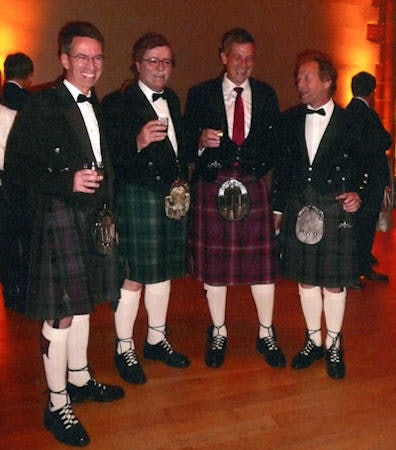 Board members of the European Society of Urogenital Radiology (ESUR) wear their tartan kilts with pride at the ESUR's annual meeting in Edinburgh, U.K., in 2012. From the left are Drs. Bernd Hamm, Lorenzo Derchi, Michel Claudon, and Nicolas Grenier.
Board members of the European Society of Urogenital Radiology (ESUR) wear their tartan kilts with pride at the ESUR's annual meeting in Edinburgh, U.K., in 2012. From the left are Drs. Bernd Hamm, Lorenzo Derchi, Michel Claudon, and Nicolas Grenier.For ECR 2015, what are your main hopes and expectations?
My expectation is that this will be another very successful congress. Judging by the record number of abstract submissions, the enthusiasm for the ECR among the radiological community is as high as it has ever been, so I think it is very likely that we will again see a packed congress venue. All of my colleagues in the Programme Planning Committee and on the Scientific Subcommittees have worked very hard to put together what I believe is one of the best scientific and educational programs possible.
We have also introduced some changes to the session formats that will make the program easier to navigate, which I expect to add some value to the whole ECR experience. Therefore, I expect to see once again a lot of satisfied attendees, learning, sharing their experience, networking, and reinforcing their passion for radiology.
The most I can hope for is that this congress will inspire people and demonstrate the concept of "radiology without borders," that we are united by the specialty and that as a community we really can achieve significant things together. Especially for younger attendees, I think the annual meeting of the ESR really has the power to consolidate people's commitment to the field and I very much hope that we can do that.
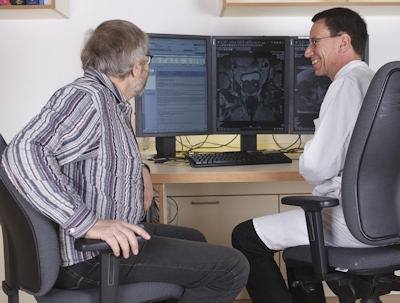 Patient contact is important to Hamm, particularly given his keen interest in prostate imaging.
Patient contact is important to Hamm, particularly given his keen interest in prostate imaging.What's new this year compared with ECR 2014?
As I hinted in my previous answer, the big innovation this year is that we have made some important organizational changes to the program. Most teaching courses are now grouped under the heading of E³ -- European Excellence in Education, and are categorized according to the levels of the European Training Curriculum for Radiology (ETCR).
The courses are divided into five branches: the Rising Stars program, which is aimed at residents, medical students, and radiographers in training; the European Diploma Prep Sessions, which provide preparatory sessions for future European Diploma in Radiology (EDiR) candidates; the Beauty of Basic Knowledge program, which focuses on knowledge essential to the daily practice of radiology; the ECR Academies, which concentrate on particular areas of radiology and are suited to general and subspecialized radiologists; and finally, the ECR Master Classes, which are designed for participants and subspecialists seeking cutting-edge information in specific fields of interest.
Another important change is that we will place more emphasis on the scientific sessions this year. Not only will there be more of these sessions than before, but there will also be a best paper award given to the top presentation in each session, which will be voted for by the attendees.
Which five sessions are you particularly looking forward to and why?
Narrowing down your highlights from an ECR program is always hard because there is such a wide range of excellent sessions, and as the congress president, it is perhaps even harder.
Still, there are a few parts of the program that I am especially looking forward to. One of the ECR Academies, which are an element of our new session structure, is focusing on diagnostic urogenital radiology, something I have a particular professional interest in. This academies program is spread across six sessions, each looking at a different aspect of urogenital radiology, corresponding to levels II and III of the ETCR, which will give a great in-depth look at this subspecialty. On a similar note, the New Horizons session on image-guided interventions of the prostate features some fantastic speakers and would be high on my to-do list.
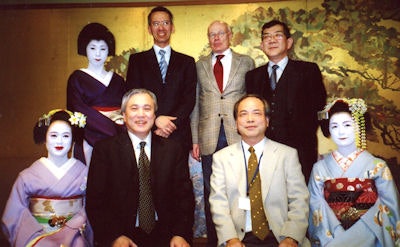 Promoting good international relations means a great deal to Hamm. He is shown here during the meeting of the Japanese-German Radiological Society.
Promoting good international relations means a great deal to Hamm. He is shown here during the meeting of the Japanese-German Radiological Society.The ESR Meets program is another area where I have a strong personal connection, with both the German Radiological Society (DRG) and the European Association of Urologists (EAU) coming to the congress as guests. And we certainly look forward to welcome our colleagues from the Republic of Korea and Turkey. Then, we have a fantastic trio of Honorary Lecturers joining us this year: Drs. Anne Osborn and James Brink from the U.S., plus Gerald Antoch, from Düsseldorf, Germany, so their talks are all going to be worth attending.
Finally, the Late-Breaking Clinical Trials session is a really exciting recent addition to the meeting. I think the idea of having people presenting brand-new research results at the congress is very much in the spirit of the ECR and I'm looking forward to seeing how this one goes.
If you were organizing the congress from the start again, what would you do differently with the benefit of hindsight?
On the one hand, this question is difficult to answer as we all hope that the upcoming ECR 2015 will be a great event. And the success of such a congress does not mainly depend on its president. It needs many people with brilliant ideas and thoughts and many helpful hands to organize a good congress. Let me take this opportunity to thank them all.
Ultimately, the question as to how we can improve on the ECR will be answered by its participants: As in earlier years, everybody can express their opinion and evaluate our congress by letting us know what they liked, what they disliked, and what they expect of such a meeting. And I am sure that the president of ECR 2016, Dr. Katrine Åhlström-Riklund, from Umeå in Sweden, will deal with all your suggestions to organize another successful ECR next year.
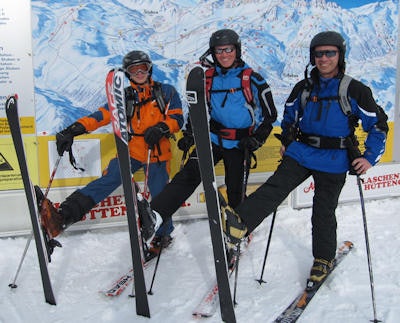 Hamm loves to relax and unwind by skiing with his two sons Charlie and Colin.
Hamm loves to relax and unwind by skiing with his two sons Charlie and Colin.What are your personal interests outside of radiology?
While I like my job and can make a contribution to our specialty, my current professional obligations leave little time for activities outside work. Above all, I enjoy skiing with my family and sailing with friends. And last but not least, Berlin offers an outstanding choice and diversity of cultural activities.

